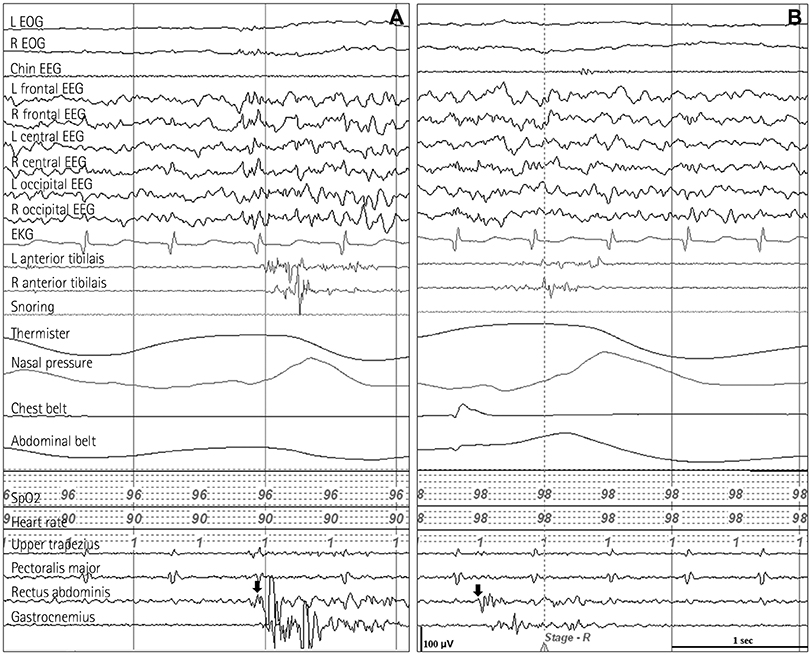J Clin Neurol.
2019 Oct;15(4):569-571. 10.3988/jcn.2019.15.4.569.
Unusual Presentation of Propriospinal Myoclonus Occurring during Stable Sleep
- Affiliations
-
- 1Department of Neurology, Seoul Metropolitan Government-Seoul National University Boramae Medical Center, Seoul National University College of Medicine, Seoul, Korea. spore85@gmail.com
- KMID: 2467769
- DOI: http://doi.org/10.3988/jcn.2019.15.4.569
Abstract
- No abstract available.
MeSH Terms
Figure
Reference
-
1. Antelmi E, Provini F. Propriospinal myoclonus: the spectrum of clinical and neurophysiological phenotypes. Sleep Med Rev. 2015; 22:54–63.
Article2. Roze E, Bounolleau P, Ducreux D, Cochen V, Leu-Semenescu S, Beaugendre Y, et al. Propriospinal myoclonus revisited: clinical, neurophysiologic, and neuroradiologic findings. Neurology. 2009; 72:1301–1309.
Article3. Vetrugno R, Provini F, Meletti S, Plazzi G, Liguori R, Cortelli P, et al. Propriospinal myoclonus at the sleep-wake transition: a new type of parasomnia. Sleep. 2001; 24:835–843.4. American Academy of Sleep Medicine. International Classification of Sleep Disorders. 3rd ed. Darien, IL: American Academy of Sleep Medicine;2014.
- Full Text Links
- Actions
-
Cited
- CITED
-
- Close
- Share
- Similar articles
-
- Propriospinal Myoclonus following Spinal Anesthesia: Two Cases
- Treatment of Propriospinal Myoclonus at Sleep Onset
- Propriospinal Myoclonus and Cervical Dystonia Developed by Compressive Cervical Myelopathy
- Propriospinal Myoclonus: Clinical and Neurophysiologic Characteristics
- Propriospinal myoclonus after cervical epidural blockade: A case report


